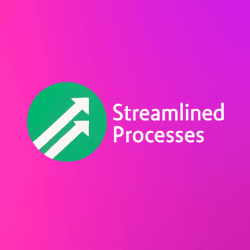For Recurring Payment Systems, see our main page here.
What Are Recurring Payment Systems and Why Do They Matter?
Recurring Payment Systems are tools and processes that allow businesses to automatically collect payments on a regular basis. Whether it’s monthly subscriptions or weekly services, these systems remove the need for manual invoicing and chasing down late payments.
As digital commerce grows, so does the need for efficient cash flow management. For example, SaaS platforms heavily rely on recurring models to deliver value while ensuring consistent revenue. In other words, recurring payments are not just about convenience—they’re critical to long-term success.
Core Benefits of Recurring Payment Systems
Choosing the right system has a direct impact on your business operations and customer relationships. Most importantly, it streamlines revenue collection while improving the user experience.
- Consistency: Automated billing ensures regular income you can count on.
- Convenience: Customers avoid the hassle of re-entering payment info.
- Retention: Subscription billing leads to higher lifetime value per customer.
- Security: Leading platforms integrate PCI-DSS compliance and tokenization.
For example, a fitness studio using a recurring billing solution can reduce drop-offs by charging members automatically each month—keeping revenue steady even during off-peak seasons.
Popular Use Cases for Recurring Payments
Recurring Payment Systems are not just for software companies. A wide variety of businesses rely on them today. The versatility is what makes these systems so powerful.
- eLearning platforms billing students monthly
- Utilities collecting bills automatically
- Managed IT services invoicing clients on a retainer model
- Product subscription boxes reordering on demand
Consequently, whether you’re offering physical goods or services, there’s a use case that fits your business. Moreover, recurring payments can also help small businesses scale by providing predictable revenue and easier financial planning.
Top Features to Look For in Recurring Payment Systems
All systems aren’t created equal. Therefore, it’s important to evaluate features that impact your operations directly. Here are essential capabilities to prioritize:
- Flexible Billing Cycles: Daily, weekly, monthly, or custom intervals
- Advanced Reporting: Insightful analytics help you optimize revenue streams
- Automatic Retry Logic: Minimizes failed payments and reduces churn
- Customer Portal: So users can manage their subscriptions themselves
- Integrated Invoicing: Simplifies B2B workflows with branded documentation
For instance, a digital agency with multiple tiered service plans can use advanced billing rules to tailor pricing based on contract terms—this eliminates spreadsheet headaches.
Comparing Top Recurring Payment Platforms
Several platforms dominate the space, and each has its strengths. Choosing the right one depends on your customer base, budget, and specific operational needs.
- Stripe: Developer-friendly and powerful APIs for customized solutions
- Recurly: Rich in automation and ideal for complex subscription models
- Chargebee: Best for B2B SaaS and global tax handling
- Square Subscriptions: Built for small businesses and simple setup
For example, if your app requires rapid scaling and international support, Chargebee or Stripe may be the best fit. However, if you’re a local yoga studio, Square might offer all you need without the complexity.
Challenges Associated With Recurring Payment Systems
While powerful, these systems aren’t immune to challenges. Being proactive can help you avoid pitfalls that many businesses face.
- Failed Payments: Often due to expired cards or insufficient funds
- High Churn Rate: Poor UX or unclear value can cause cancellations
- Compliance Risk: Especially in industries dealing with sensitive data
- Pricing Complexity: Mismatched billing structures can confuse users
To clarify, even tools like automated retries and dunning strategies can’t fix churn unless your core offer remains valuable and your user experience is seamless.
Industry Trends Shaping Recurring Payment Systems
Recurring revenue is becoming a standard across sectors. Most notably, non-software industries like retail, healthcare, and automotive are now adopting these systems too.
Furthermore, new consumer behaviors are influencing features. Customers now expect:
- Self-service portals
- Mobile-optimized billing flows
- Clear cancellation policies
- Pro-rated refunds upon upgrade or downgrade
AI is playing a growing role as well. For instance, predictive analytics can identify at-risk customers based on payment history, while chatbots handle routine payment queries.
This article was created with the assistance of AI tools and reviewed by our team at Streamlined Processes LLC to ensure accuracy and relevance.
How AI Is Enhancing the Subscription Payment Experience
AI tools help personalize billing flows, segment users by value, and improve retention strategies. For example, machine learning algorithms can determine the optimal time to bill specific users, especially in global time zones.
In addition, AI-powered dashboards provide real-time metrics to inform decision-making—helping business owners focus on what matters most: delivering value and growing revenue.
FAQ: Recurring Payment Systems Explained
Q1: Are recurring payments secure?
Yes. Reputable systems encrypt payment data and comply with PCI-DSS standards. Tokenization further minimizes risk by masking sensitive details.
Q2: Can I offer one-time and recurring billing together?
Absolutely. Most payment platforms support mixed billing models, allowing you to serve more customers with varied needs.
Q3: What happens if a customer’s card is declined?
Most systems offer automatic retry logic and email notifications so the user can update details quickly. Some also include customizable dunning workflows.
Q4: How do recurring payment systems handle multiple currencies?
Leading platforms like Stripe and Chargebee support multi-currency billing, helping companies scale globally without logistic hurdles.
Q5: Will it work for my small business with 10 customers?
Yes, many systems cater to small businesses. Even with a few clients, automation saves time and ensures a reliable cash flow.
In Conclusion: A Strategic Asset for Modern Businesses
Recurring Payment Systems are much more than billing tools—they are strategic assets that support long-term customer relationships and steady growth. In the same vein, automation, flexibility, and real-time insights enable businesses to serve their users better while scaling confidently.
Tools powered by AI and guided by human expertise will continue to evolve. Therefore, staying informed and choosing the right solution can significantly improve your bottom line.
Follow us on Facebook here.

